Low energy bills, reduced carbon footprint, and record sales are just a few reasons why green homes are appealing to both homebuyers and builders. The award-winning Georgetown Flora Green home blends sustainable innovation with classic architectural features allowing it to appear as if it has always been part of the historic Seattle neighborhood.
The home achieved a 5-Star Built Green certification—the highest level possible awarded by the green home certification program of the Master Builders Association of King and Snohomish Counties—and is solar ready and equipped for net zero energy living. The sustainable features reduce water usage up to 60 percent and lower utility costs for the homeowners by about 50 to 60 percent. Pervious pavement, native landscaping and high efficiency plumbing fixtures all contribute to water savings of approximately 6,000 gallons of water per year in the home.
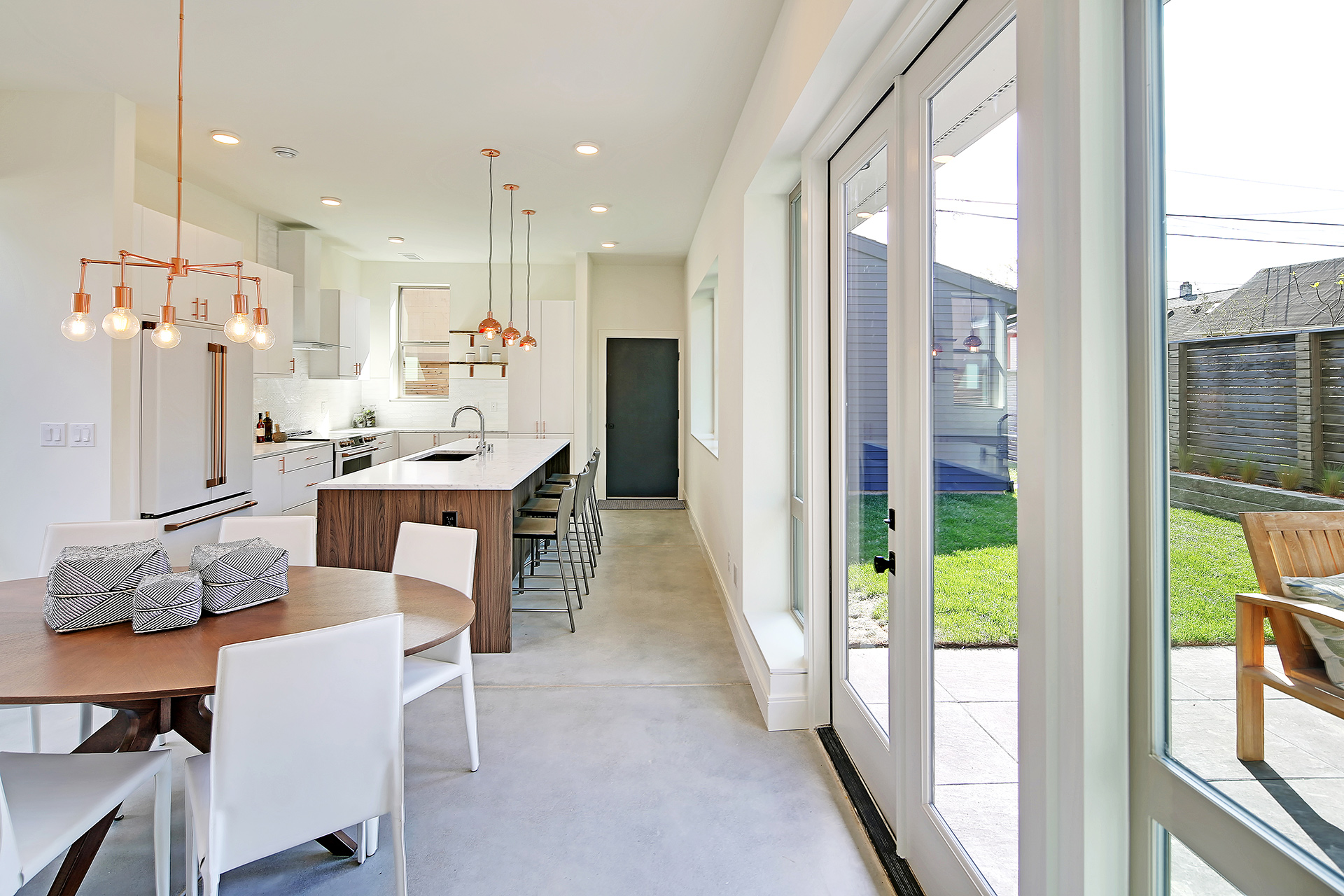
Photo by Tucker English Photography 
Photo by Tucker English Photography 
Photo by Tucker English Photography
Dwell Development, the firm behind Georgetown Flora Green, builds energy efficient homes in the region by creating an energy efficient envelope, or boundary for conditioned air between the inside and outside of homes. “We completely design the home around being as efficient as possible,” notes Anthony Maschmedt, Principal at Dwell Development.
Getting close to a passive home is the ultimate goal of each new Dwell project, ultimately allowing the homeowner to close the gap with additions such as solar panels. Passive homes have the potential for significant space heating and cooling related energy savings.
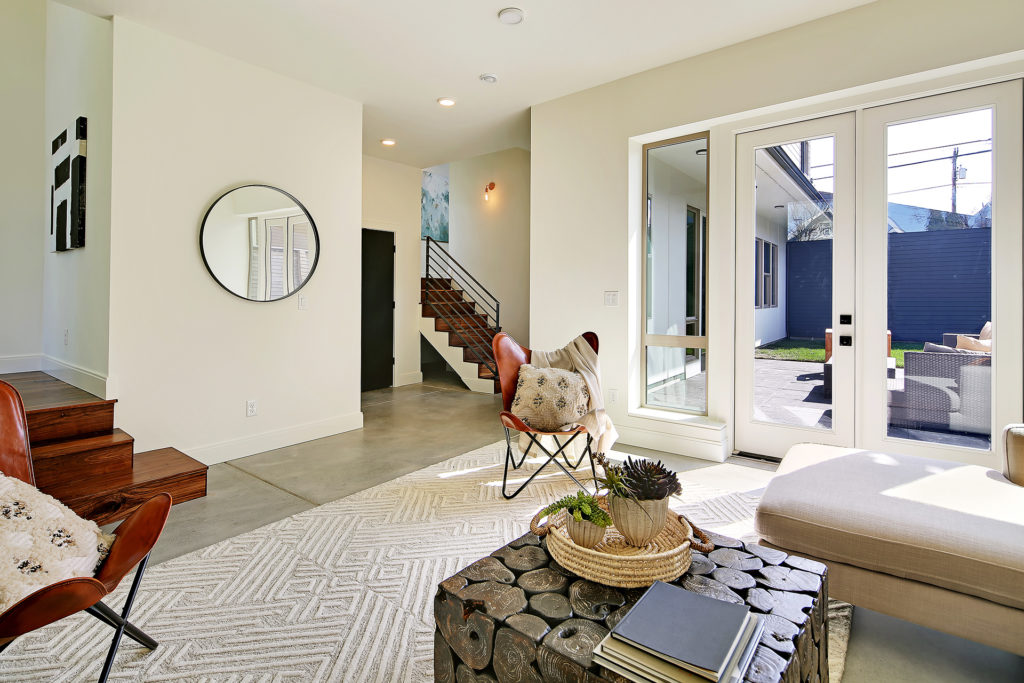
Photo by Tucker English Photography 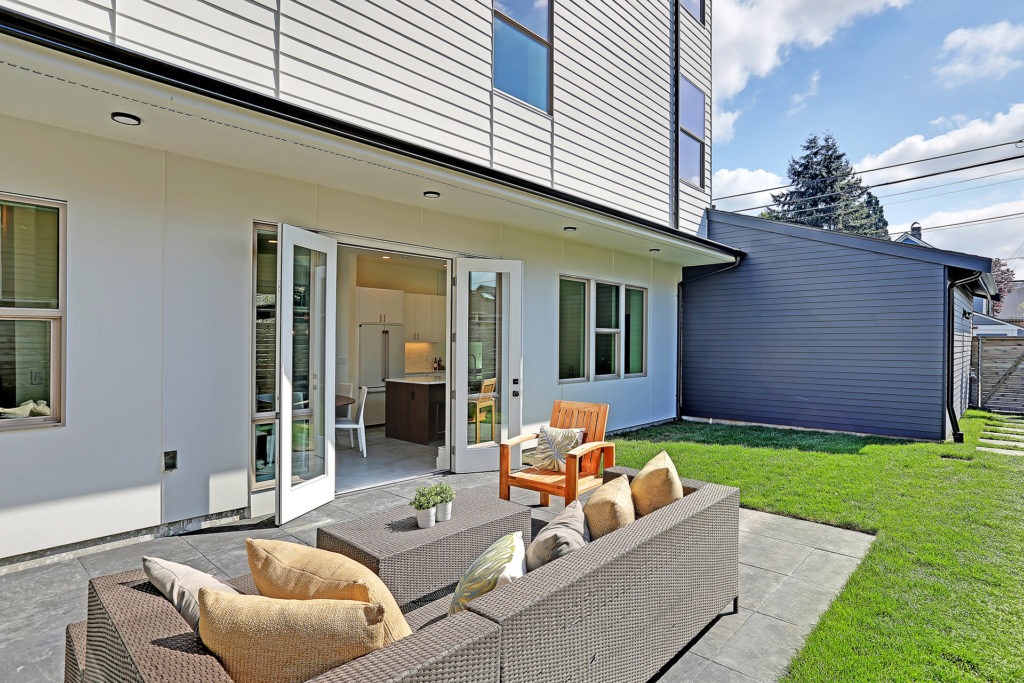
Photo by Tucker English Photography 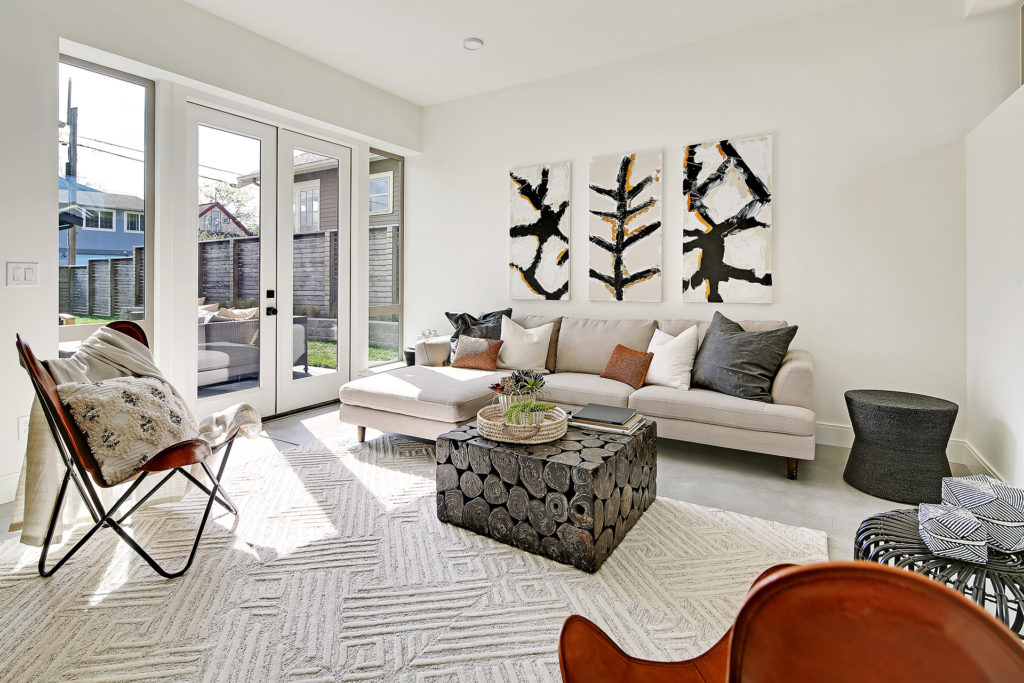
Photo by Tucker English Photography
“The State of Washington has a baseline energy code that is progressive and difficult to meet,” notes Maschmedt. Yet features like triple-pane high performance windows, an energy-efficient HVAC system and 8 to 12 inch thick walls with large amounts of insulation contribute to creating an air tight envelope for the home. Georgetown Flora Green contains a heat recovery ventilation (HRV) system that circulates air with a heat exchange process, exchanging the heat from stale inside air into cooler, outside air. These efforts contributed towards a Home Energy Rating System (HERS) Index of 49, which is 10 points better than the 2019 average HERS Index Score of 59.
Another project priority was integrating reclaimed and native materials, such as locally procured wood and flooring, and corrugated metal and recycled building materials. Benefits of using reclaimed materials include lowering the energy use required for new material production and diverting waste from landfills.
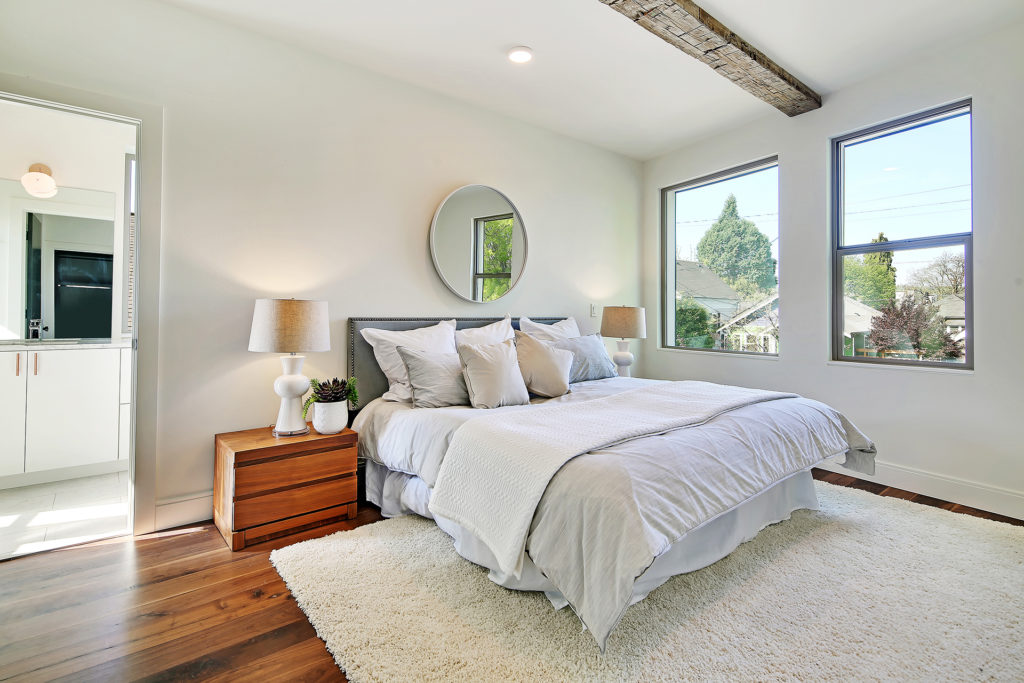
Photo by Tucker English Photography 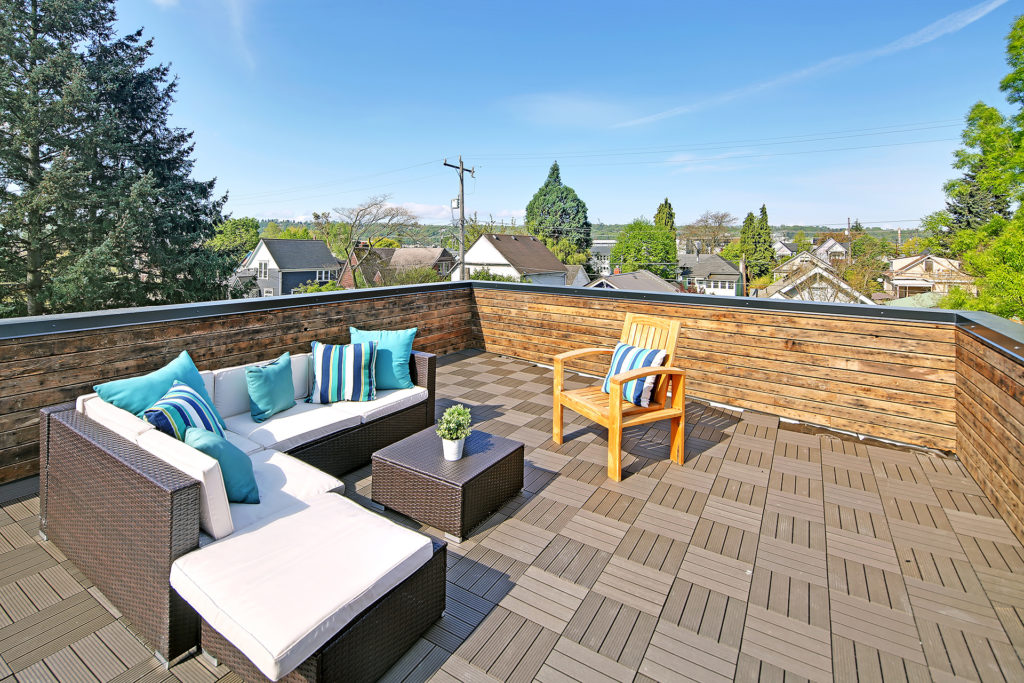
Photo by Tucker English Photography 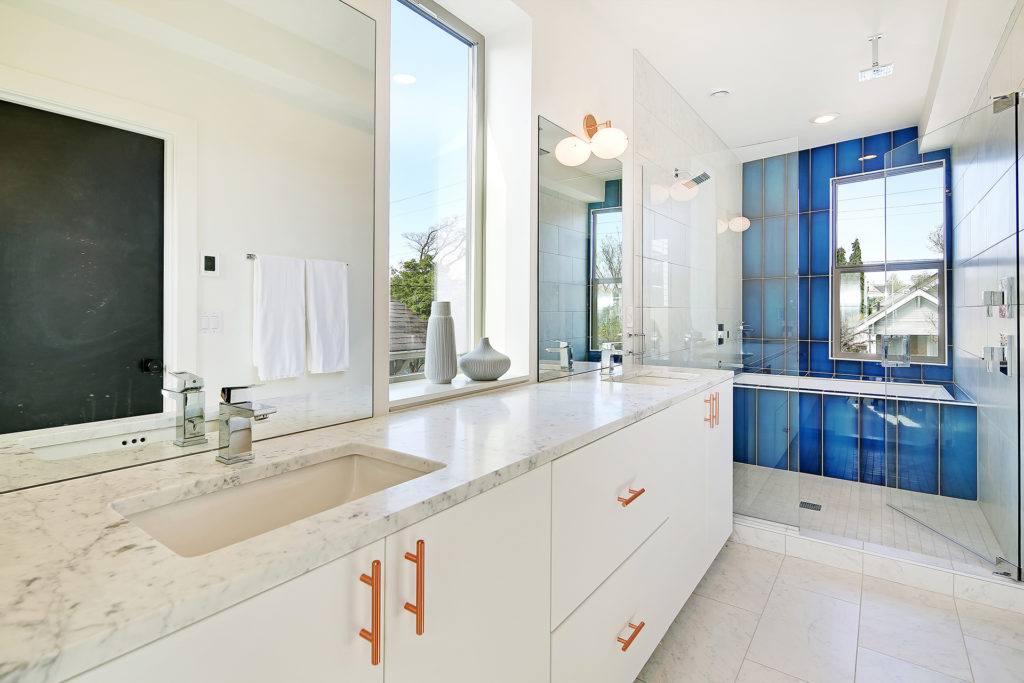
Photo by Tucker English Photography 
Photo by Tucker English Photography
Buyer interest in sustainably-designed, attractive homes is particularly prominent in the Pacific Northwest, but also spreading across the nation. In the Seattle area, building a home like Georgetown Flora Green catches the community’s eyes. When Dwell builds in a neighborhood, “people see [Dwell’s] signs, and it creates a buzz,” describes Maschmedt, as evidenced by the highly successful sale of Georgetown Flora Green. A similar opportunity exists for homebuilders nationwide to meet buyer demand by providing homes that combine energy-efficiency and attractive design.
For more information about NAHB’s sustainable and green building programs, contact Anna Stern. And to stay current on the high-performance residential building sector, follow NAHB’s Sustainability and Green Building team on Twitter.


